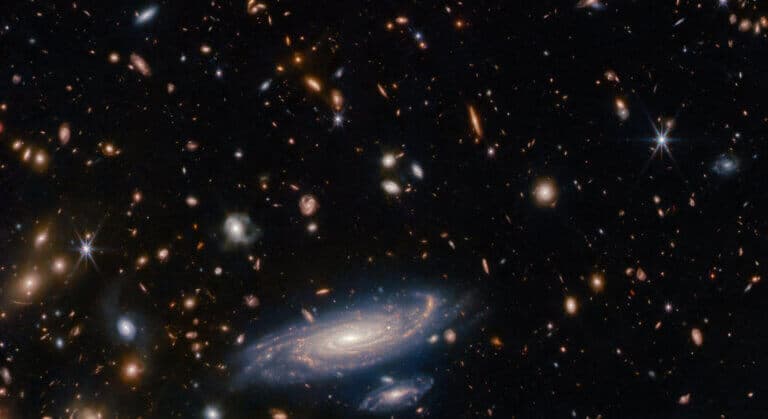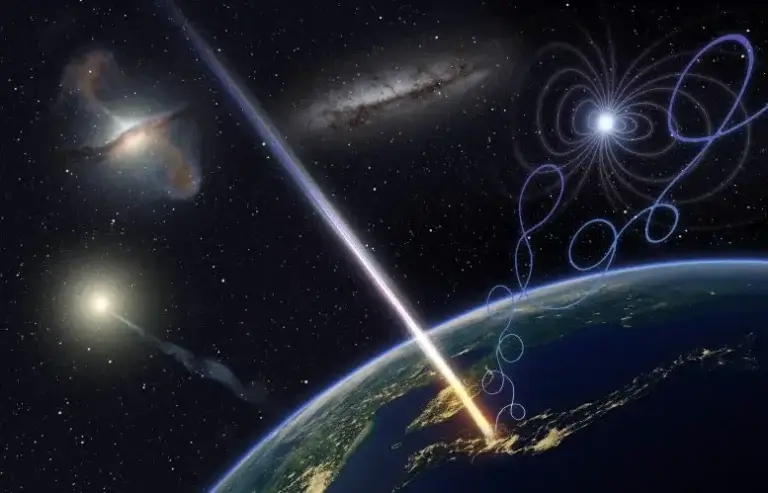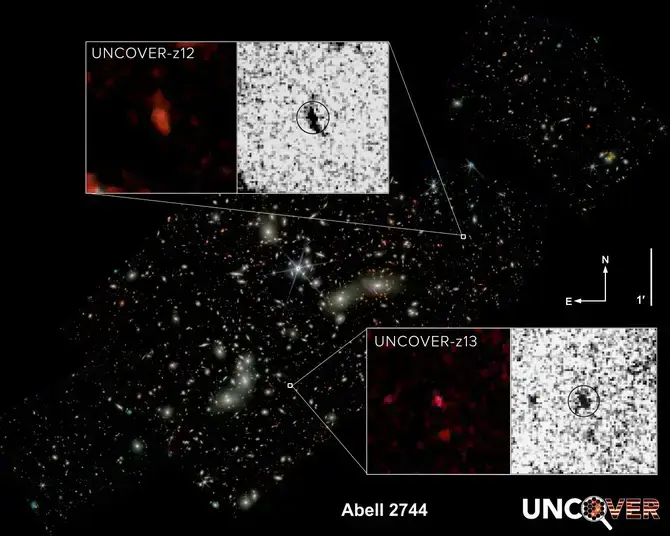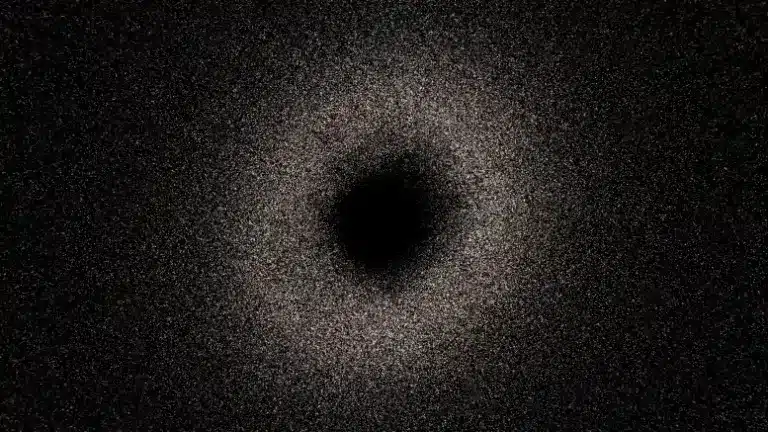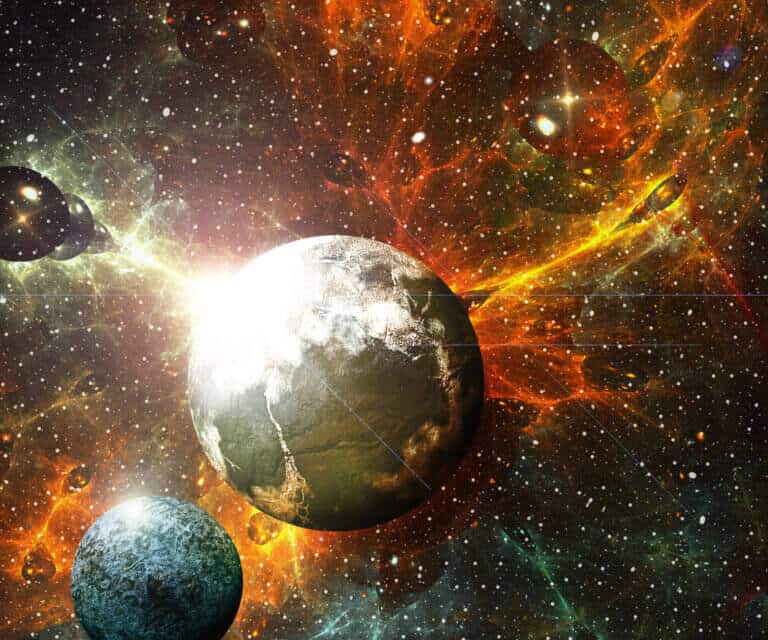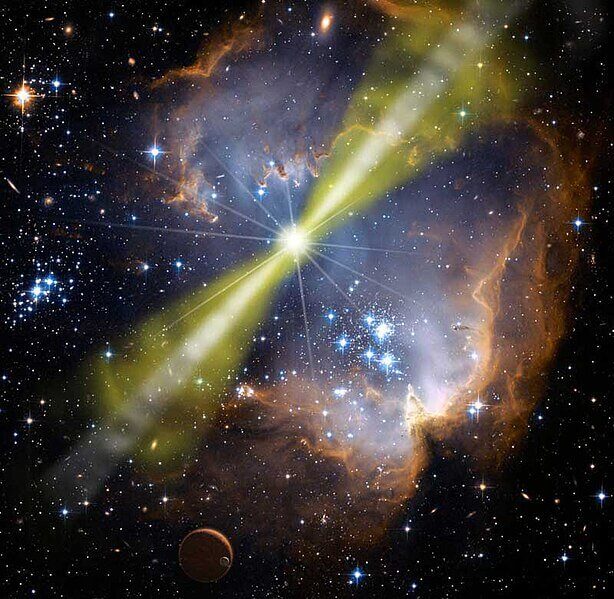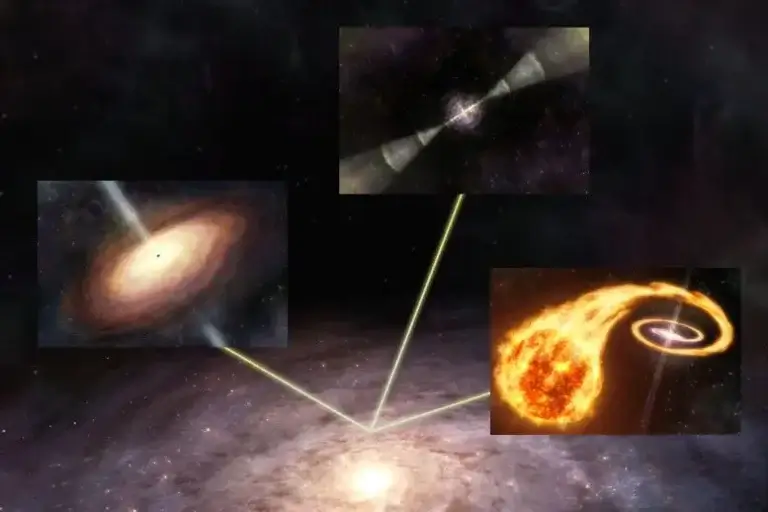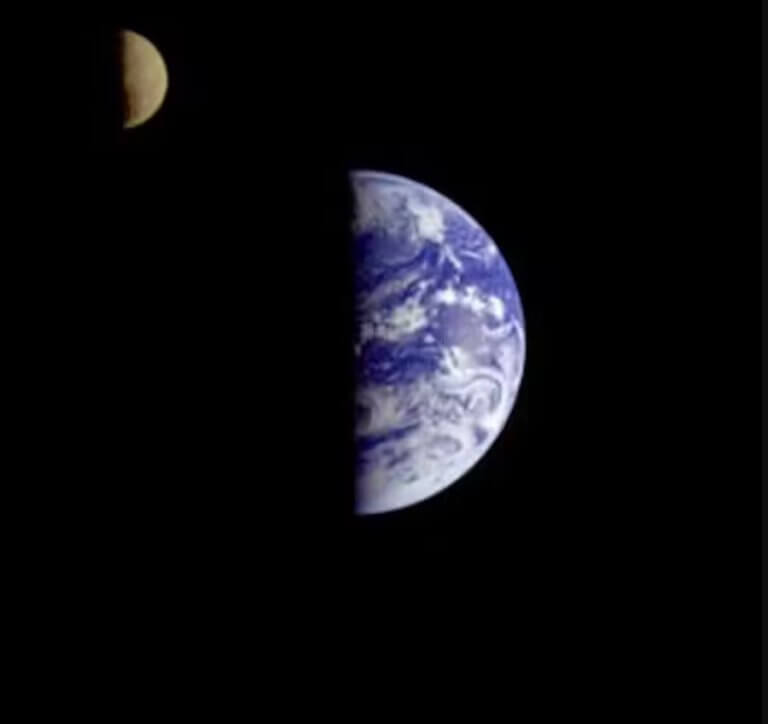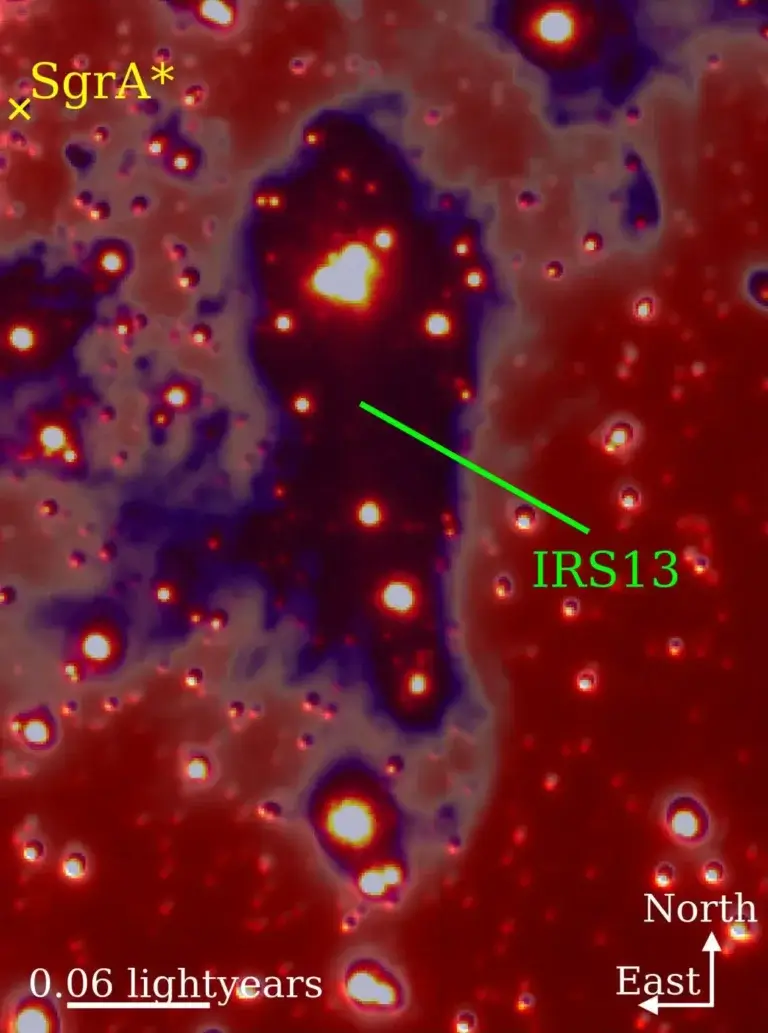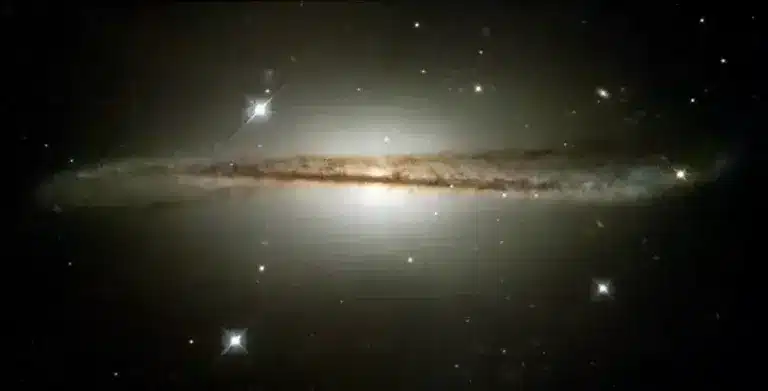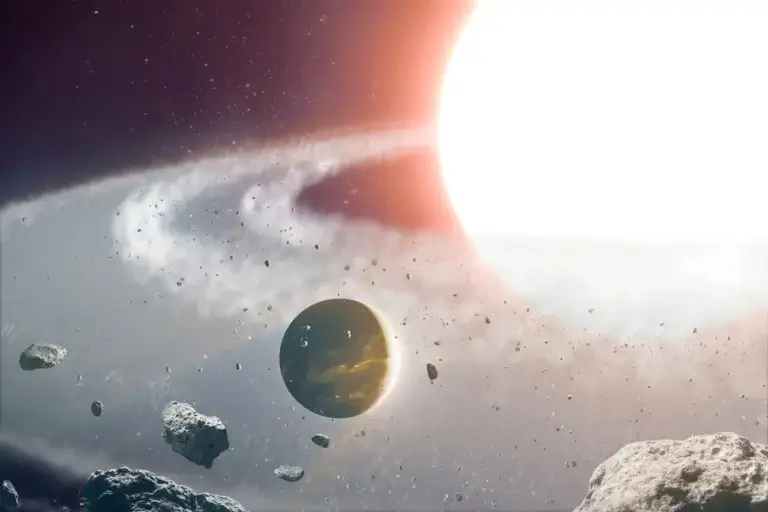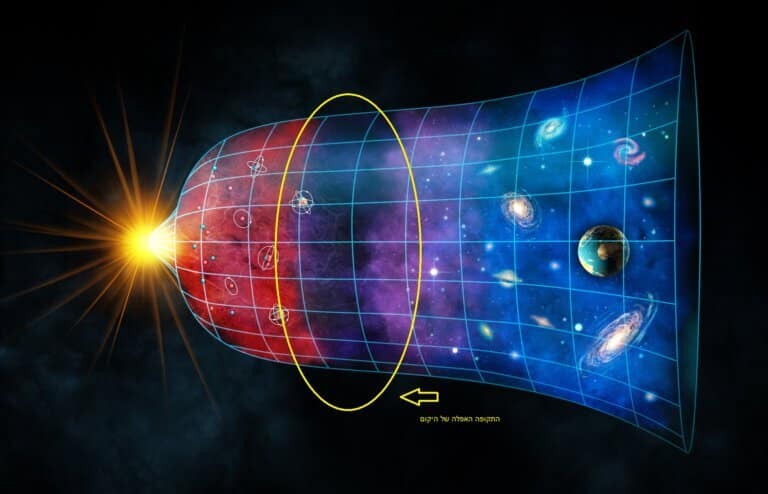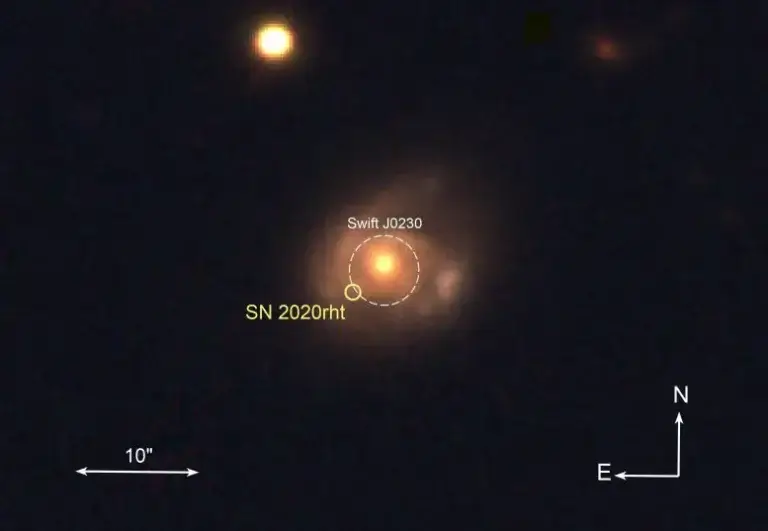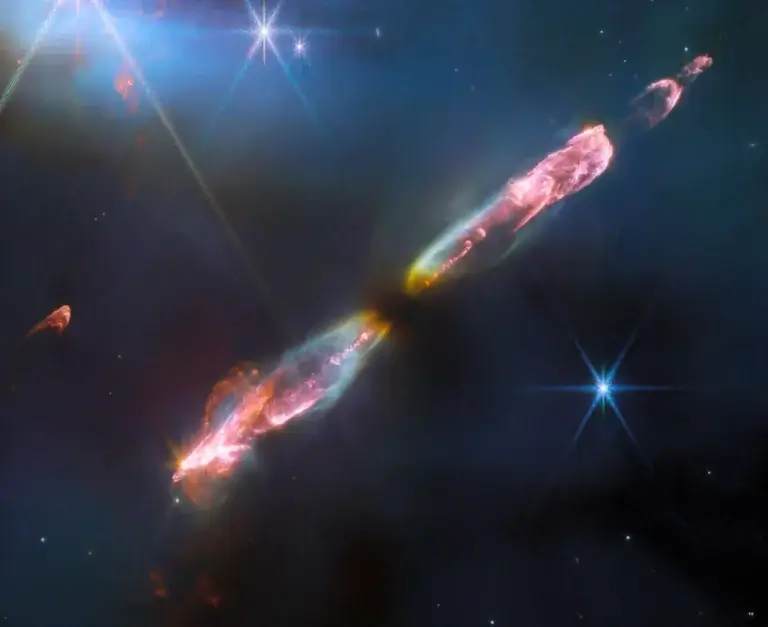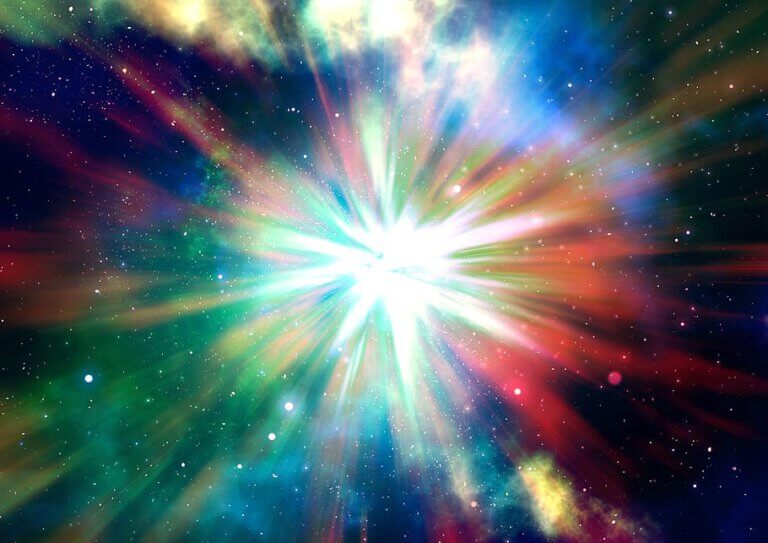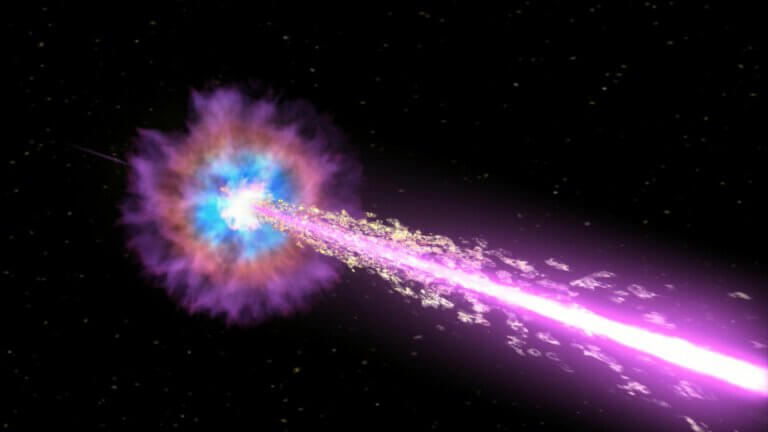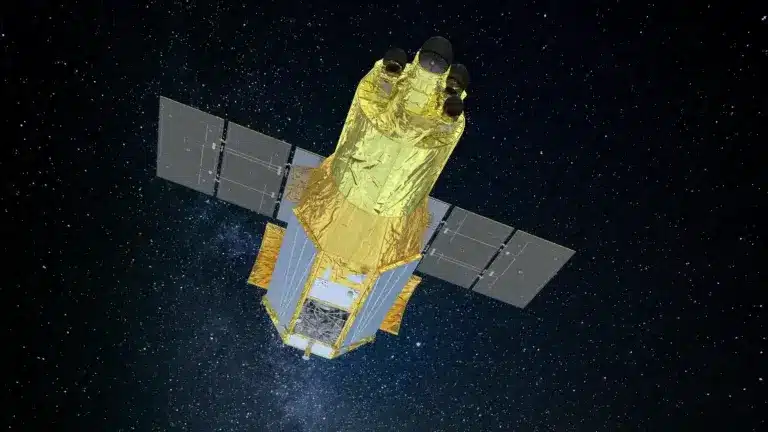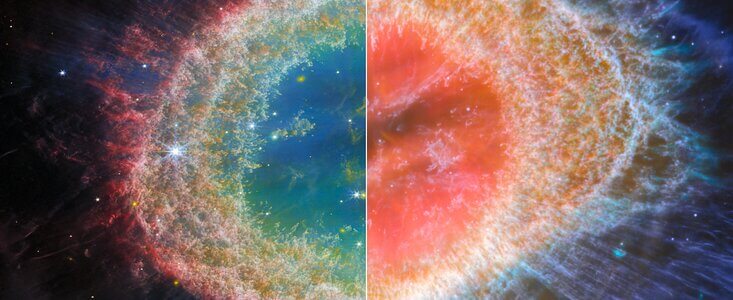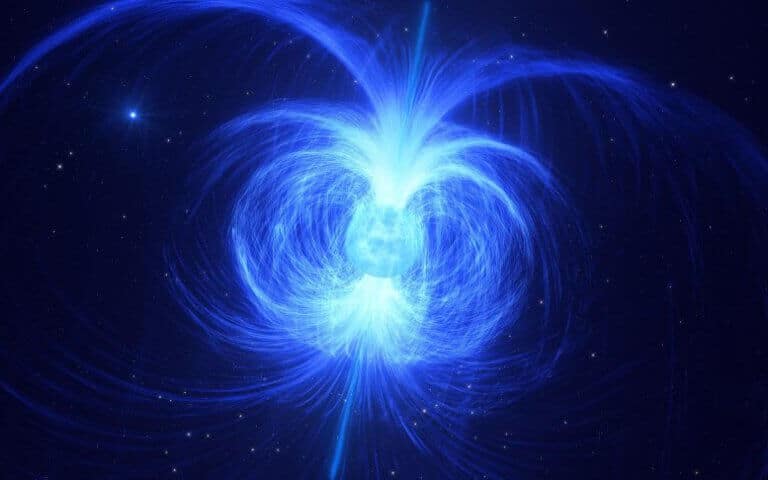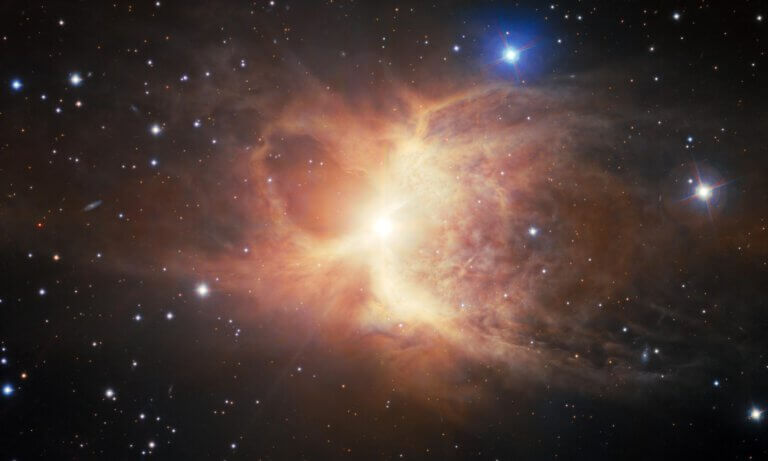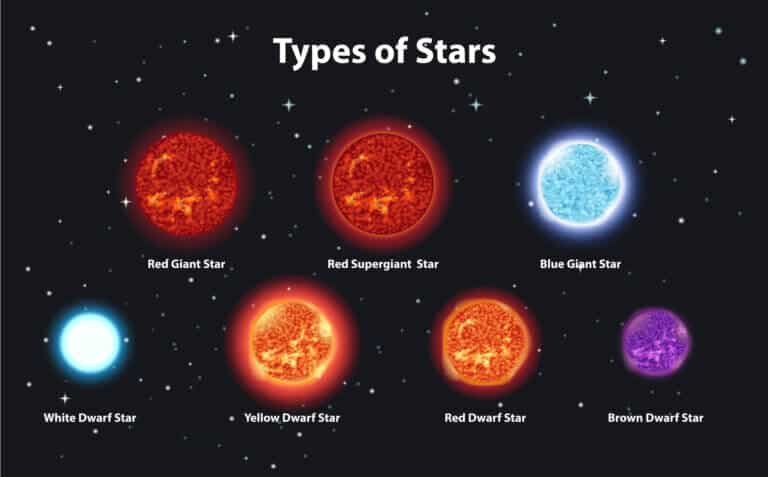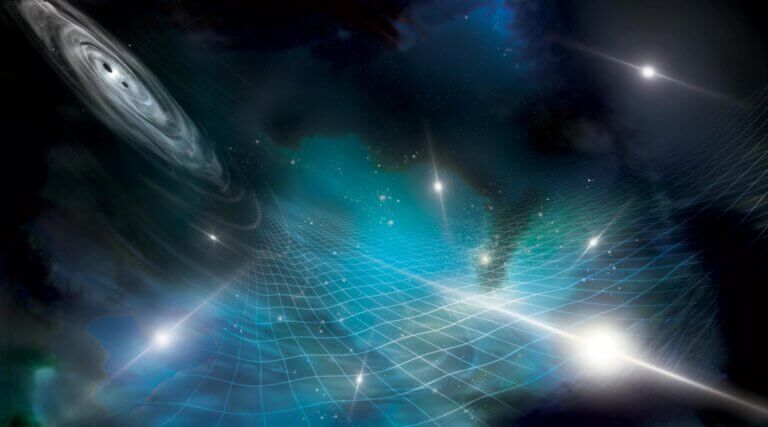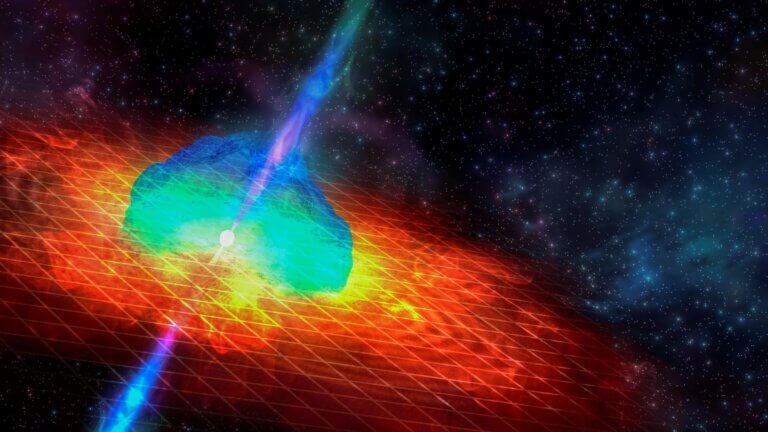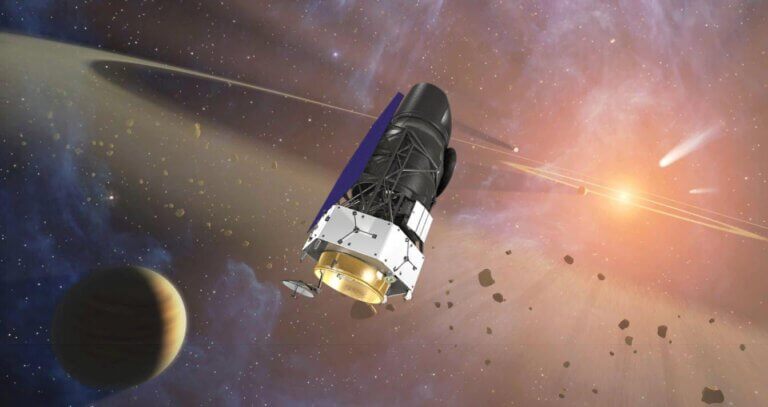Hayadan > Space and astronomy > Astrophysics > Page 3
Astrophysics
- Avi Blizovsky
- December 1, 2023
- 10 תגובות
- Avi Blizovsky
- November 26, 2023
- 9 תגובות
The cosmic ray detector that includes 507 ground scintillator stations, covering an extensive detection area of 700 square kilometers in Utah, USA. On May 27, 2023, scientists discovered a particle with an enormous energy level of 244 EeV.
- Avi Blizovsky
- November 20, 2023
- 36 תגובות
Unlike other distant galaxies that have been discovered, which appear as small red dots, the two new galaxies are large and have an unusual appearance - one resembling a peanut and the other a fluffy ball, indicating the diversity of galaxies in the early universe. According to the speed and direction of their distance, today they are beyond our line of sight
- Avi Blizovsky
- November 13, 2023
- 2 תגובות
The European Space Agency's Gaia mission discovered over half a million new stars, tagged 150,000 asteroids, and identified 380 cosmic lenses. These discoveries advance our understanding of the universe, setting the stage for the expected release of Gaia DR4 data in 2025
- Avi Blizovsky
- November 12, 2023
- 6 תגובות
Researchers from the Australian National University have developed a model that is the most comprehensive view of the history of the universe. The study highlights the change that the universe underwent from the moment of its formation 13.8 billion years ago to its current state, full of objects such as protons, atoms and galaxies
- Dr. Moshe Nahamani
- November 1, 2023
- 3 תגובות
- Avi Blizovsky
- October 26, 2023
- 20 תגובות
New research has improved the accuracy of the parameters that control the expansion of the universe. More precise parameters will help astronomers determine how the universe grew to its current state, and how it will evolve in the future.
- Avi Blizovsky
- October 23, 2023
- 4 תגובות
It has been 30 years since a group of scientists led by Carl Sagan found evidence of life on Earth using data from instruments aboard NASA's Galileo space probe and only combining instruments while ignoring existing knowledge made this possible
- Avi Blizovsky
- October 21, 2023
- One response
Researchers have found that the star cluster IRS13 near the supermassive black hole SagittariusA* at the center of our galaxy is much younger than predicted
- Avi Blizovsky
- October 20, 2023
- 8 תגובות
The cause of this is a distorted dark matter halo
- Avi Blizovsky
- October 11, 2023
- 2 תגובות
The TESS space telescope discovered a planet that survived a merger between two stars as the merged star swelled to become a red giant
- The Hebrew University
- October 8, 2023
- No comments
Professor Zvi Piren, the holder of the Schwartzman Chair at the Rakah Institute of Physics at the Hebrew University and Professor Amir Levinson from Tel Aviv University will take part in a research group of the prestigious Simmons Foundation as part of an international cooperation in mathematics and physical sciences for the study of neutron stars and black holes
- Tel Aviv University
- September 28, 2023
About 50 million years after the big bang, we will be able to measure the evolution of the universe and its composition by measuring radio waves from the moon
- Avi Blizovsky
- September 24, 2023
- 3 תגובות
A Sun-like star located in a galaxy roughly 500 million light-years away is being gradually devoured by a black hole, shedding a mass equal to three Earths on each close pass.
- Avi Blizovsky
- September 20, 2023
- 3 תגובות
Herbig-harrows are luminous regions surrounding young stars. They form when stellar winds or jets of gas ejected from these stars create shock waves that collide at high speeds with nearby gas and dust.
- Noam Chai
- September 15, 2023
- 25 תגובות
A special article in honor of Hebrew new year summarizing the creation of the world through the lens of science
- Avi Blizovsky
- August 27, 2023
- No comments
The unusual jet structure reveals unique features of the relatively nearby gamma-ray burst that can be studied in better detail than the gamma-wave bursts discovered so far
- Avi Blizovsky
- August 25, 2023
- No comments
A new spacecraft called XRISM (X-ray Imaging and Spectroscopy Mission, pronounced "charism") is designed to separate high-energy light into the equivalent of an X-ray rainbow
- Avi Blizovsky
- August 24, 2023
- 3 תגובות
The Ring Nebula, formed by a star shedding its outer layers, is a classic example of a planetary nebula and is also relatively close to us.
- Avi Blizovsky
- August 20, 2023
- 7 תגובות
Astronomers at the European Southern Observatory discovered that the star HD 45166 is a neutron star about to become a megastar
- Avi Blizovsky
- August 19, 2023
- No comments
This end-of-life phase of red giant stars is relatively short, and the celestial structures that form around them are rare, so the Tobi Pitcher Nebula is an excellent example of a case study in the evolution of a star
- Weizmann Institute
- August 16, 2023
The brown dwarf is part of a new pair system that may advance our understanding of the evolution of stars and planets under extreme radiation conditions
- Avi Blizovsky
- August 15, 2023
- 2 תגובות
"The effect of gravitational waves on pulsars is very weak and difficult to detect, but we built the credibility of the findings over time as we collected more data," said Caterina Cazziano, NANOGrav team member and senior lecturer at Caltech.
- Avi Blizovsky
- August 13, 2023
- No comments
A highly unusual burst of high-energy light from a nearby galaxy is linked by scientists to a neutron star merger
- Avi Blizovsky
- August 1, 2023
- 3 תגובות
NASA's Nancy Grace Roman space telescope, which will be launched in May 2027, will be able to find an astonishing number of 400 Earth-mass stray worlds. Indeed, in the new study, one such candidate has already been identified

